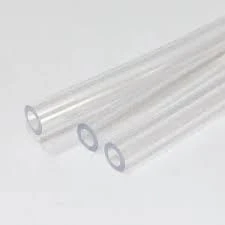Nov . 11, 2024 01:07 Back to list
HDPE Sheet Dimensions and Sizes for Various Applications
Understanding HDPE Sheet Sizes A Comprehensive Guide
High-Density Polyethylene (HDPE) is a versatile and widely used thermoplastic polymer known for its durability, chemical resistance, and lightweight properties. It is utilized across various industries, from packaging and construction to marine applications and environmental projects. One important aspect when dealing with HDPE sheets is understanding the sizes available and how to select the right one for your specific needs.
What Is HDPE?
HDPE is a type of polyethylene characterized by its high strength-to-density ratio. It is commonly used for manufacturing containers, piping, geomembranes, and various other products. The material’s resistance to impact, moisture, and various chemicals makes it an ideal choice in settings where durability is key. Furthermore, HDPE sheets are easy to fabricate and can be cut, welded, or formed into a variety of shapes, making them highly adaptable.
Common Dimensions of HDPE Sheets
HDPE sheets come in a range of sizes, which can vary based on the manufacturer. However, there are some standard dimensions that are commonly available
1. Thickness HDPE sheets are typically available in thicknesses ranging from 1/16 inch (1.5 mm) to 1 inch (25 mm). The thickness chosen often depends on the application; for example, thicker sheets may be required for structural applications while thinner sheets are adequate for lightweight projects.
2. Width and Length Standard sheet sizes often include dimensions of 4 x 8 feet (1.22 x 2.44 meters) and 5 x 10 feet (1.52 x 3.05 meters). These sizes are convenient for a variety of applications, allowing for easy transport and handling.
3. Custom Sizes Many suppliers also offer custom-sized sheets to cater to specific project requirements. This flexibility makes HDPE sheets an excellent choice for any job where standard dimensions may not fit.
hdpe sheet sizes

Selecting the Right Size
When choosing HDPE sheet sizes for your project, consider the following factors
- Application What will the HDPE sheets be used for? Structural applications, such as load-bearing platforms or dock components, may necessitate thicker sheets, while applications like signage or packaging may require thinner options.
- Weight Heavier sheets can be cumbersome for projects requiring mobility or frequent relocation. Consider how much weight you can handle and whether the sheets need to be cut down to a more manageable size.
- Cost Larger sheets may appear economical, but if they exceed your needs, cutting them down can lead to waste and increased expenses. Assess your budget alongside your requirements.
- Ease of Fabrication If you’re planning on cutting or welding the sheets, consider how the size might impact these processes. Smaller sheets might be easier to manage and fabricate than larger, unwieldy dimensions.
Conclusion
In summary, understanding HDPE sheet sizes is crucial for selecting the right material for your project. With a variety of thicknesses, widths, lengths, and custom options available, there’s a solution for almost any application. Whether you're involved in construction, packaging, or environmental projects, HDPE sheets provide the durability and versatility needed to succeed. Always consider the specific requirements of your project, and don’t hesitate to consult with suppliers to ensure you are making the best choice. By taking these factors into account, you'll be equipped to make informed decisions that meet both your functional and budgetary needs.
-
Premium PVC Soft Sheets: Clear, Flexible & Durable
NewsAug.12,2025
-
Premium PVC Round Rods: Durable, Chemical Resistant, Easy to Machine
NewsAug.11,2025
-
PP U-channel: Chemical-Resistant, Lightweight & Durable
NewsAug.10,2025
-
Transparent PVC Pipe: Clear Flexible Tubing for Fluids
NewsAug.09,2025
-
Durable PP Rigid Sheet: Versatile & High-Quality Plastic Panels
NewsAug.08,2025
-
Premium Glossy PP Rigid Sheet – Durable & Versatile
NewsAug.07,2025

